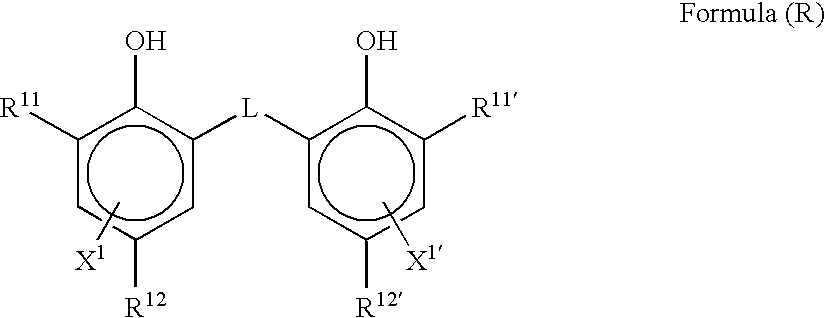Photothermographic material and image forming method
a technology which is applied in the field of photothermographic material and image forming method, can solve the problems of new problems which must be solved, color tone of developed silver images is unsettled and changed, and color tone difference between parts of developed sheets, etc., to improve the method of forming an image, improve image stability, and stable photographic properties
- Summary
- Abstract
- Description
- Claims
- Application Information
AI Technical Summary
Benefits of technology
Problems solved by technology
Method used
Image
Examples
example 1
1. Preparation of PET Support
1) Film Manufacturing
[0464]PET having IV (intrinsic viscosity) of 0.66 (measured in phenol / tetrachloroethane=6 / 4 (weight ratio) at 25° C.) was obtained according to a conventional manner using terephthalic acid and ethylene glycol. The product was pelletized, dried at 130° C. for 4 hours. Thereafter, the mixture was extruded from a T-die and rapidly cooled to form a non-tentered film having such a thickness that the thickness should become 175 μm after tentered and thermal fixation.
[0465]The film was stretched along the longitudinal direction by 3.3 times using rollers of different peripheral speeds, and then stretched along the transverse direction by 4.5 times using a tenter machine. The temperatures used for these operations were 110° C. and 130° C., respectively. Then, the film was subjected to thermal fixation at 240° C. for 20 seconds, and relaxed by 4% along the transverse direction at the same temperature. Thereafter, the chucking part was slit o...
example 2
[0559]The sample Nos. 1 to 20 of Example 1 were exposured and thermally developed as described below, and sensitivity difference, Dmax difference and difference in color tone of the obtained images were evaluated.
[0560]
[0561]Exposure was performed on samples using a Fuji medical dry laser imager FM-DP L in which a NLHV 3000E laser diode fabricated by Nichia Corporation as a laser diode beam source was mounted in an exposure portion thereof and a beam diameter thereof was adjusted to about 100 μm. Other exposure conditions were as follows: exposure of a photothermographic material was performed for 10−6 sec with a photothermographic material surface illumination intensity at 0 mW / mm2 and at various values from 1 mW / mm2 to 1000 mW / mm2. A light-emission wavelength of laser beam was 405 nm. Thermal development was performed in conditions that 4 panel heaters were set to 117° C.-117° C.-117° C.-117° C., and developed for 12 seconds by controlling the transport speed. And further, another...
example 3
1. Preparation of Photothermographic Materials
[0571]Samples a to k were prepared as similar to Example 1 but reducing agent-1 (R-6) and reducing agent-2 (R-5) were changed to compounds as shown in Tables 3 and 4. Compounds involved in claim 7 and 10 in present invention were represented as compound A in the tables. Compounds involved in claim 8 and 11 in present invention were represented as compound B in the tables. Compounds involved in claim 9 and 12 in present invention were represented as compound C in the tables.
2. Evaluation of the Samples
[0572]Samples above prepared were imagewise exposed and thermal developed using a Fuji medical dry laser imager FM-DPL similarly to Example 1, wherein the imagewise exposure was started from a leading end of the photothermographic material followed by the thermal development which was started before completing the imagewise exposure up to a posterior end thereof.
[0573]Sensitivity difference (ΔS) and density difference (ΔDmax) in each samples...
PUM
| Property | Measurement | Unit |
|---|---|---|
| wavelength | aaaaa | aaaaa |
| temperature | aaaaa | aaaaa |
| speed | aaaaa | aaaaa |
Abstract
Description
Claims
Application Information
 Login to View More
Login to View More - R&D
- Intellectual Property
- Life Sciences
- Materials
- Tech Scout
- Unparalleled Data Quality
- Higher Quality Content
- 60% Fewer Hallucinations
Browse by: Latest US Patents, China's latest patents, Technical Efficacy Thesaurus, Application Domain, Technology Topic, Popular Technical Reports.
© 2025 PatSnap. All rights reserved.Legal|Privacy policy|Modern Slavery Act Transparency Statement|Sitemap|About US| Contact US: help@patsnap.com



